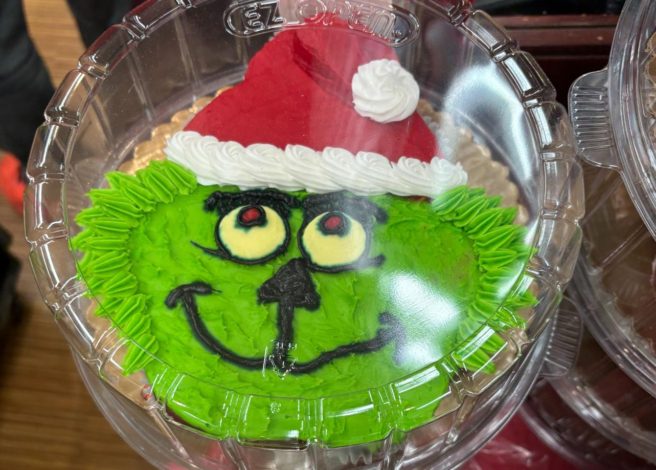At a Glance
- Treating new product packaging as an afterthought leads to costly issues like product damage, poor shelf appeal, and missed sales.
- Packaging affects the full customer experience — from protection and usability to how the product is perceived on shelf.
- Involving packaging partners early results in better design, longer shelf life, and stronger performance in-store.
- Inline recommends collaborating early, testing packaging with the product, and planning ahead to avoid last-minute scrambling.
Ho-Ho-Hold Up
You love the holidays. It’s your favorite time of the year! Your food business is decked out in lights, decorations, and your holiday cookie recipes are unrivaled. This year, you had an excellent idea for gigantic, holiday-themed cupcakes. You tested out every recipe, experimented with candy canes, gingerbread, and even chili peppers (spicy pastries are all the rage, aren’t they?). Now, you finally have your final product: Spicy and sweet cupcakes with holiday designs that would make Santa himself blush. But you didn’t consider one vital ingredient in your product equation: packaging. These bad boys are the size of cantaloupes. How can you serve them? Should you cut them into smaller pieces? Is calling your packaging supplier in a panic the right thing to do? (Spoiler: panicking is never the answer.)
You’re not alone in this scenario. Every day, food businesses launch new products while leaving packaging as an afterthought. The results of this decision can be catastrophic. You could be left with packaging that doesn’t fit your product and/or doesn’t showcase the hard work you put into perfecting your creations.
At Inline Plastics, we’ve been working with food businesses to create packaging for fresh food for over 55 years. We have seen the pitfalls of not welcoming packaging to the new product discussion. We have also seen the successes of companies that have.
This article shows why you should involve your packaging supplier early in product development. We’ll explore the lost opportunities when they are excluded. You’ll learn about the competitive edge true collaboration brings. Also, we will present a straightforward roadmap for launching new products together. Partnering wisely can make this holiday season unforgettable — and not because customers are questioning your spicy cupcake idea.
The Hidden Costs of Last-Minute Packaging Decisions
 When you leave packaging until the end of product development, things get hectic. You end up rushing to find “good enough” solutions. Instead of getting the perfect packaging for your masterpiece, you’re left with whatever’s on hand.
When you leave packaging until the end of product development, things get hectic. You end up rushing to find “good enough” solutions. Instead of getting the perfect packaging for your masterpiece, you’re left with whatever’s on hand.
This rushed approach creates a domino effect of problems. You could get the wrong material. Maybe you wanted clear PET (polyethylene terephthalate) plastic to display your lovely holiday decorations. Instead, you’re stuck with paper packaging because it’s all that’s available.
Even worse, you miss the chance to test your packaging properly. Without adequate testing time, you’re essentially launching your product with crossed fingers, hoping everything works out on the shelf. Usually, this results in a letdown: Your product launches in the wrong container. Meanwhile, you begin the packaging search that should have started months earlier.
What Really Happens When Your Product Hits the Shelf
Picture this: Your beautiful cupcakes finally make it to store shelves, but they’re in paper packaging…and slightly too small. You also had no time to test the containers. The packaging wasn’t top of mind. What happens next isn’t pretty. The gorgeous frosting gets smashed against the lid. Customers can’t see the intricate holiday designs through the paper packages. Some containers break under the weight, creating sticky messes that store employees have to constantly clean up.
Your packaging problems don’t just affect how your product looks — they impact every part of the customer experience.
These issues directly hurt your sales. Studies show that people buy with their eyes first. If your product doesn’t look appetizing or seems difficult to handle, customers will simply reach for something else. Even the most amazing recipe can’t overcome packaging that makes your product look unappetizing or damaged.
It’s not all doom and gloom. Let’s look, conversely, at what happens when your packaging supplier is looped into the conversation before launch.
The Success Stories: When Packaging Partners Get Involved Early
Innovative food businesses treat packaging as part of their core product, not just a container. One retailer found out this lesson when they sold sandwiches in plain plastic bags for many years. Store employees constantly struggled with bags that wouldn’t open properly or would tear while packing. Sandwiches got crushed on shelves, leading to waste and unhappy customers.
When they finally partnered with a packaging supplier, everything changed. The new rigid containers kept the sandwiches safe. They highlighted the fresh ingredients with clear plastic and made the products look high-end. They experienced an increase in sales. Even though the new packaging cost more than the old bags, the increased sales and reduced waste more than made up for the investment.
Another situation we have seen involved specialty salads with proteins, nuts, and cheese. Mixing all the ingredients in regular containers caused the cheese’s moisture to wilt the lettuce quickly. This significantly shortened its shelf life. They worked with packaging experts early on. As a result, they made compartmentalized containers with custom inserts. These kept ingredients separate until customers were ready to eat, extending shelf life and ensuring perfect portion control for nutritional labeling requirements.
Your Step-by-Step Plan for Packaging Perfection
The solution isn’t complicated, but it requires changing how you think about product development. Here’s your roadmap for making packaging a true partner in your success:
Start the conversation early. Before finalizing your recipe or product size, involve packaging suppliers in your brainstorming sessions. Ask them, “What’s possible?” rather than, “Can you fit this?” Doing so opens opportunities you might not have considered.
Test everything together. Your product and packaging should be developed as one unit. Test how your cupcakes look in different materials. See how the packaging protects delicate decorations during shipping. Make sure containers stack well on shelves and fit in customers’ hands comfortably.
Think beyond the container. Consider the entire customer journey. Will your packaging work in automation equipment? Does it fit standard shelf dimensions? Can customers clearly see your product’s best features? What about the label — where does it go? And when it comes to usability, what matters more — maximum tamper protection or easier one-handed opening? Every operation will weigh these specifications differently, so defining priorities is key to choosing the right solution.
Plan for the unexpected. Build relationships with packaging partners who understand your business. When you have promotions coming up or seasonal volume changes, they should be notified weeks in advance, not days. This prevents the dreaded last-minute scramble that costs you money and causes stress.
Walk the stores regularly. The best partnerships involve suppliers who understand your retail environment. They should visit stores, see how your products perform on shelves, and bring back ideas for improvements you might not have noticed.
Your Recipe for Success (Packaging Included)
 Every day you delay bringing packaging into your product development process, you’re gambling with your results. Products fail not because the recipes are bad, but because the container doesn’t do its job of protecting, preserving, and presenting your hard work.
Every day you delay bringing packaging into your product development process, you’re gambling with your results. Products fail not because the recipes are bad, but because the container doesn’t do its job of protecting, preserving, and presenting your hard work.
Think about it this way: You wouldn’t launch a dish without perfecting the recipe first. So why would you premiere it without perfecting the customer experience? Your packaging is the first thing customers touch, the last thing they see when they’re finished, and everything in between.
Companies that understand this principle don’t just avoid problems, they create competitive advantages. They get to market faster, with packaging that enhances their product rather than hiding it. They build relationships with suppliers who become invested in their success, leading to better pricing, priority service, and innovative solutions.
The choice is yours. You can keep treating packaging as a commodity and hope for the best. Or you can give it the seat at your product development table it deserves.
Are you interested in learning more about packaging solutions for fresh food? Visit our Learning Center today and explore a wide variety of topics.

